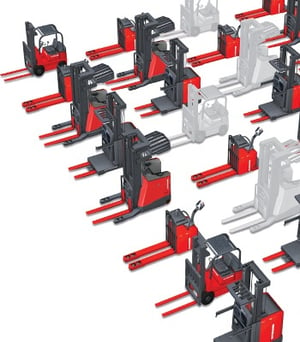 Expanding your motive power fleet is a big undertaking. Often, customers have made the decision to expand before consulting an expert, and we find ourselves preaching caution to ensure that the expansion is done properly. Moving too quickly can lead to costly miscalculations.
Expanding your motive power fleet is a big undertaking. Often, customers have made the decision to expand before consulting an expert, and we find ourselves preaching caution to ensure that the expansion is done properly. Moving too quickly can lead to costly miscalculations.
In our opinion, there are three essential steps you can take to ensure a successful forklift fleet expansion. Two steps come before making the ultimate decision, while the third involves continuous measurement.
Understand Your Current Power Usage
With a thorough site assessment, you and your motive power provider can determine exactly what you've been doing up to this point within your operation. Along with calculating your current power usage, you must take a full inventory of all of your equipment, from batteries to chargers to monitoring software. While your future needs will obviously dictate any changes, it's critical to have a full understanding of how new equipment will mesh with the old. For example, adding an additional shift to an operation means you might have to make significant changes to your motive power system. Or, if you're simply adding a few new operators and trucks, you'll just want to ensure that they're integrated seamlessly.
Simulate Your Future
Simulations will always tell the true motive power tale. To illustrate, we'll return to the example of adding a new shift; many customers are often surprised that they may not need to add new forklifts or batteries to their fleet to increase productivity. It might just mean a shift in charging technology so that your operators can opportunity charge or fast-charge to get through that second shift. By simulating a variety of scenarios, you and your motive power provider will be able to determine the most effective way to expand. Keep in mind that two other key factors must be taken into account: the amount of space you have and the number of operators you employ.
Constantly Reevaluate
While meticulous planning should make for a smooth expansion, there are always ways to increase effectiveness after the fact. All the planning in the world can't account for the snafus that will occur, or for unforeseen changes in your operation. Until you see your expanded operation in action, you won't be able to make the tweaks necessary to achieve optimal efficiency. That's why many customers also incorporate monitoring equipment—if they don't have it already—when the time comes to expand. Taking a look at operational data after three months, six months, and even a year will allow you to glean how well your expansion has gone, and if any additional action needs to be taken.
Finding Balance to Execute the Perfect Expansion
When it comes to expanding, it's easy to underspend or overspend. Only with a methodical approach—and the help of a motive power partner—can you find the sweet spot. Even then, you might need to make some adjustments once your expansions are all said and done. By taking a detailed look at your current power usage, simulating your future power usage, and constantly reevaluating your operation, the chances of your expansion being successful improve dramatically.


 Ryan Lynch
Ryan Lynch
